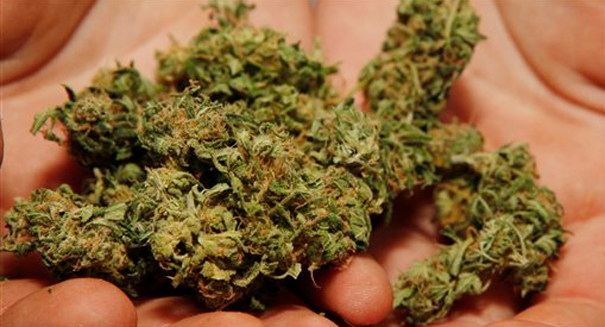Veterans may be key in the push to legalize marijuana, as despite a boost in popularity it remains illegal in nearly half of states.
Marijuana has enjoyed a surge in popularity lately, but its support seems to have stalled, and veterans may be the key to pushing the movement further. New York Gov. Andrew Cuoma announced recently he would sign legislation that would make therapeutic pot acceptable for treatment for veterans who suffer from post-traumatic stress syndrome, and this argument could provide a new way forward for marijuana advocates.
Marijuana remains illegal under federal law, and therefore there isn’t extensive medical research into its impact on PTSD sufferers. Currently, it’s been legalized as a form of PTSD treatment in 28 states as well as the District of Columbia. Alaska doens’t incorporate PTSD into its marijuana program but people can buy pot legally there.
Veterans groups are pushing for growing acceptance of marijuana. Veterans say that pot can help them avoid having to take loads of medications, including potentially much more harmful opioids, to handle their PTSD symptoms.
The following statement from the American College of Physicians explains the relation between marijuana and PTSD.
The scientific evidence is too limited to make firm conclusions about the effectiveness and safety of cannabis and cannabinoid products in treating chronic pain or post traumatic stress syndrome (PTSD). The results of two systematic evidence reviews from the U.S. Department of Veterans Affairs (VA) are published in Annals of Internal Medicine.
Cannabis for Chronic Pain
Currently, medical marijuana is legal in 28 states and the District of Columbia and up to 80 percent of persons who seek medicinal cannabis do so for pain management. While the use of medicinal cannabis has become increasingly accepted, there is little comprehensive and critically appraised information about the benefits and harms of using it to treat chronic pain.
Researchers reviewed data from 27 chronic pain trials to determine the benefits and harms of cannabis preparations for treating chronic pain in adults. They found low-strength evidence that cannabis alleviates neuropathic pain but there was insufficient evidence to draw conclusions about the use of medical marijuana for other types of pain. The researchers found sufficient evidence to conclude that cannabis use among the general population could increase risk for harms, including motor vehicle accidents, psychotic symptoms, and short-term cognitive impairment. There was insufficient evidence to determine the risks for other types of harms associated with heavy or long-term cannabis use or in older populations.
Plant-based Cannabis for PTSD
More than one-third of patients seeking cannabis for medical purposes in states where medicinal marijuana use is legal list PTSD as the primary reason for their request. However, there is little scientific evidence available for determining the benefits and harms of cannabis use for treating PTSD.
The author of an accompanying editorial from Vanderbilt Psychiatric Hospital writes that these findings largely echo the findings of other respected organizations and suggest a growing consensus in the field. Little high-quality evidence exists from which to draw firm conclusions about the efficacy of cannabis and cannabinoid products for treating pain and PTSD. Regardless of the research gaps, states are unlikely to remove medical indications from legislation. Practicing physicians must learn what they can about cannabis, educate their patients, and make recommendations based on the science.
A recorded do-not-resuscitate directive significantly increases the likelihood of dying where one chooses
An end-of-life plan that includes a recorded do-not-resuscitate directive significantly increases a person’s chances of dying where she chooses. A brief research report is published in Annals of Internal Medicine.
Most persons report that they would prefer to die at home or in hospice care, but more persons in England die in a hospital than in these settings (48 versus 29 percent). Researchers at The Royal Marsden NHS Foundation Trust and Imperial College London analyzed routinely collected electronic health records (EHR) to identify the determinants of achieving preferred place of death.
Initially developed as the Electronic Palliative Care Co-ordination System for London, United Kingdom, the Coordinate My Care (CMC) service enables persons to create a digital urgent care plan with their clinicians that is electronically accessible to all health and social care professionals involved in a patient’s care. The researchers analyzed health records for more than 9,000 patients with CMC plans and found that more than 75 percent of them died in their preferred place and almost all of them (97.8 percent) preferred to be cared for and die outside of the hospital. In addition, clear limits to treatment were associated with achieving preferred place of death. Those with a recorded do-not-resuscitate order were 76 percent more likely to die in their preferred place than those with a recorded for-resuscitation status.
According to the researchers, these finding suggest that conversations about end-of-life care, including care limits, can be considered a positive gateway to achieving a patient’s wishes for their future care.
credit:420intel.com













